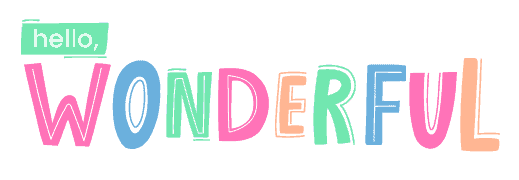
Photo credit: Canva
By using this site, you agree to our Terms of Use. This post may contain affiliate links. Read our disclosure policy. As an Amazon Associate I earn from qualifying purchases.
Follow us on Instagram for more fun ideas for kids!
If you’re looking for a fun and creative activity to do with your kids, look no further than clay crafts! Beyond being an excellent medium for children to express themselves, clay is an excellent tool for teaching them about the various shapes, textures, and colors that are available to them.
Parents are discovering that interacting with their children while crafting with clay is an excellent way to strengthen their family relationships, which is becoming increasingly popular.
Aside from that, you can use clay to educate your children on a variety of subjects such as science, math, and kids art, among others.
Clay is a low-cost and easily accessible building material because of its low density.]There are many different types of clay that can be used for this activity, each with its own unique properties. Below are some different types of clay and their benefits. We will also provide some tips on how to get started with clay play. So get your kids excited about art by giving them a chance to explore the world of clay!
Keep the following tips in mind to ensure that your child gets the most enjoyment out of his or her clay exploration.
What type of clay is best for kids?
There are all sorts of different clays that kids can use for arts and crafts projects.
One popular type is air-dry clay, which is easy to work with and doesn’t need to be baked in an oven. This type of clay is easy to use and doesn’t require any special equipment. It’s also non-toxic, so you don’t have to worry about your kids getting sick from handling it. Air-dry clay is a great option for kids who are just staring out with exploring clay.
Oven-bake clay is a type of polymer clay that is baked in the oven to create harder and more durable sculptures. This type of clay is more difficult to work with, but it can be a great option for kids who are looking for a more challenging activity.
If you’re looking for clay that can be painted or glazed after it’s been bisque fired in a kiln, then pottery clay is a good choice. The most common pottery clays are earthenware, stoneware, and porcelain. Earthenware is the type of clay that is most often used in ceramics and pottery. It is a low-fired clay composed of minerals that are found in nature, such as iron, silica, and alumina. Mid to high fired clays are stoneware and porcelain which become non-porous and vitrified at higher temperatures. Although the beauty of ceramics cannot be reproduced with air-dry or modeling clay, the barriers are having an accessible kiln for firing and access to various glazes.
Last, there is modeling clay, which can come in bright fun colors for kids and is great for sculpting. The benefits are that it’s portable and can be reused over and over again.
Whatever type of project you’re working on, there’s sure to be clay that’s perfect for the job and experience of your child!
Tips for helping kids work with clay.
The tips below do not pertain to one particular type of clay but are some great general guidelines while working with a medium like clay with is soft, pliable and prone to drying out if left unprotected for too long.
1. Start with simple shapes
When it comes to working with clay, there are a few tips that can help make the experience more enjoyable for both kids and adults. First, start with simple shapes. This will help to get a feel for the material and how it responds to different techniques.
Once you have a good understanding of the basics, you can move on to more complex shapes and forms. Another tip is to be patient.
Clay can be frustrating to work with at times, but it’s important to take your time and enjoy the process. And finally, don’t be afraid to experiment.
Try different tools and techniques to see what results you can achieve. With a little practice, you’ll be able to create all sorts of amazing sculptures from clay.
2. Let your child experiment
You should allow your children to experiment with different techniques or simply to feel the clay for the first time before you begin. Rather than being afraid of making mistakes, encourage them to be imaginative and risk taking. Second, it’s critical to offer direction and support.
Make a clay ball and show them how to roll it out into a flattened shape. Help them make imprints or shapes in the clay with your assistance as well. Be patient, and third, be creative.
When it comes to working with clay, children may require some practice. Allow them to take their time and enjoy themselves while they’re working on their projects.
The ability to make all kinds of wonderful things out of clay will come with a little bit of practice.
3. Use clay to teach science, math, and art
Clay is an excellent tool for teaching children about science, mathematics, and art. It can be used to demonstrate to students how to construct models of molecules or atoms.
Use clay to educate your students on fractions, measurement, and geometrical concepts as well. Finally, clay is a fantastic medium for expressing one’s own unique style.
Encourage your children to experiment with a variety of colors and textures. Take a look at what they can come up with!
Your children’s clay time can be transformed into a fun and educational experience with a little bit of effort on your part. You might even pick up a few new tricks of your own!
4. Get creative with textures and colors
If you’re thinking of working with clay with your kids, here are a few tips to get you started. First, take the time to explore different textures and colors of clay.
There are lots of different kinds of clay available, and each has its own unique properties. Let your kids experiment with different types of clay to see what they like best.
You can also add color to clay by using watercolors or acrylic paints. Next, consider the kind of project you want to make.
Simple pinch pots are easy for even the youngest kids to make. If you’re looking for something more challenging, try making a sculpture or a relief painting.
5. Help your child sculpt animals, people, or other objects
With a parent’s guidance, children can successfully create sculptures with clay. Start with clean hands and a moistened ball of clay.
If the clay is too dry, it will be crumbly and difficult to work with; if it’s too wet, it will be sticky and hard to control.
To make a sculpture using the pinch method, start by shaping the clay into a ball. Then use your thumb and forefinger to squeeze and pinch the ball into the desired shape.
This method is great for small sculptures such as animals or people. For larger objects, you can use the coil method. Start by rolling the clay into a long, thin rope. Then wind the rope around itself to create a coil. This method is perfect for creating vases, bowls, or pots.
6. Let your child use a kiln to fire their creations
Firing clay is a process that uses high temperatures to turn raw clay into a hard, permanent material. It is an essential step of creating ceramic objects, and it can be done in a kiln. Clay can be vitrified if fired in a kiln to high temperatures and in that case, the pieces your child makes can become functional food-safe ojects like mugs or plates.
Kilns come in a variety of sizes and shapes, and they can be powered by electricity, gas, or even wood. If you are interested in helping your child fire their clay creations, you can check out local pottery studios or classes that often offer up the use of their “community kilns” for a reasonable firing fee.
7. Store clay in a sealed container when children not using clay
Clay can be kept neatly stored in a sealed container when not in use, which will help to keep things looking tidy. This will prevent the clay from drying out and becoming crumbly as a result of the drying process.
When it comes to clay, it’s important to give children plenty of space to work because once it’s dried, clay can be difficult to remove from surfaces.
The use of newspaper or plastic sheeting to cover tables can help to make cleanup much easier. Make sure you have some wet wipes on hand in case you have sticky fingers!
Working with clay can be a rewarding and enjoyable experience for both children and adults with a little forethought and preparation.
8. Make sure your child washes their hands after working with clay
One material that is especially messy is clay. But despite the mess, working with clay can be a fun and rewarding experience for kids. If you’re thinking of letting your child work with clay, there are a few things you should keep in mind.
First, make sure your child washes their hands after working with clay. The last thing you want is for them to get clay all over the house!
Second, be sure to provide them with a clean workspace. A table covered with a cloth or sheet is ideal. Third, have plenty of water on hand to clean up any spills.
And finally, be sure to have some wet wipes on hand for sticky fingers. With a little preparation, working with clay can be a fun and creative experience for the whole family.
9. Offer encouragement and praise
When it comes to working with clay, kids often need a little bit of encouragement in order to stay focused and produce something they’re proud of.
As a parent or teacher, it’s important to offer praise and support throughout the process, rather than waiting until the final product is completed.
Point out specific things that you like as they’re happening, and let them know that you’re impressed with their progress. It can be helpful to set small goals along the way so that they have something to strive for.
For example, you might have them start with a simple coil pot and then move on to something more complex once they’ve mastered the basics.
10. Be patient – it may take time
Working with clay can be a fun and rewarding experience for kids of all ages. However, it can also be frustrating if the clay is not cooperating.
It may take some time for your child to get the hang of working with clay. Encourage them to keep trying and remind them that practice makes perfect.
If your child is feeling tense, it will be difficult for them to work with the clay. Show them how to take deep breaths and focus on the task at hand.
Offer suggestions and help your child to troubleshoot when they run into problems. Most importantly, be patient – it may take time, but eventually they will get the hang of it.
Takeaway
Working with clay can be enjoyable for children of all ages. If the clay, on the other hand, is unwilling to cooperate, the process can be frustrating. It may take some time for your child to get the hang of sculpting with clay, so be patient with them.
Encourage them to persevere and keep reminding them that practice makes perfect, as they will eventually learn. In the event that your child is experiencing anxiety while working with the clay, they will have a difficult time.
Showing them how to take deep breaths and concentrate on the task at hand will assist them in relaxing. When they run into difficulties, offer suggestions and assistance in troubleshooting.
You Might Also Like
What Crafts Can I Do With A Three Year Old?
Best Kids Crafts To Do At Home
Agnes Hsu is a mom of three and has been inspiring parents and kids to get creative with easy activities and family friendly recipes for over 10 years. She shares her love for creative play and kids food to her 2MM+ followers online. Agnes' commitment to playful learning and kindness has not only raised funds for charity but also earned features in prestigious nationwide publications.

